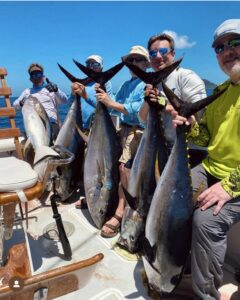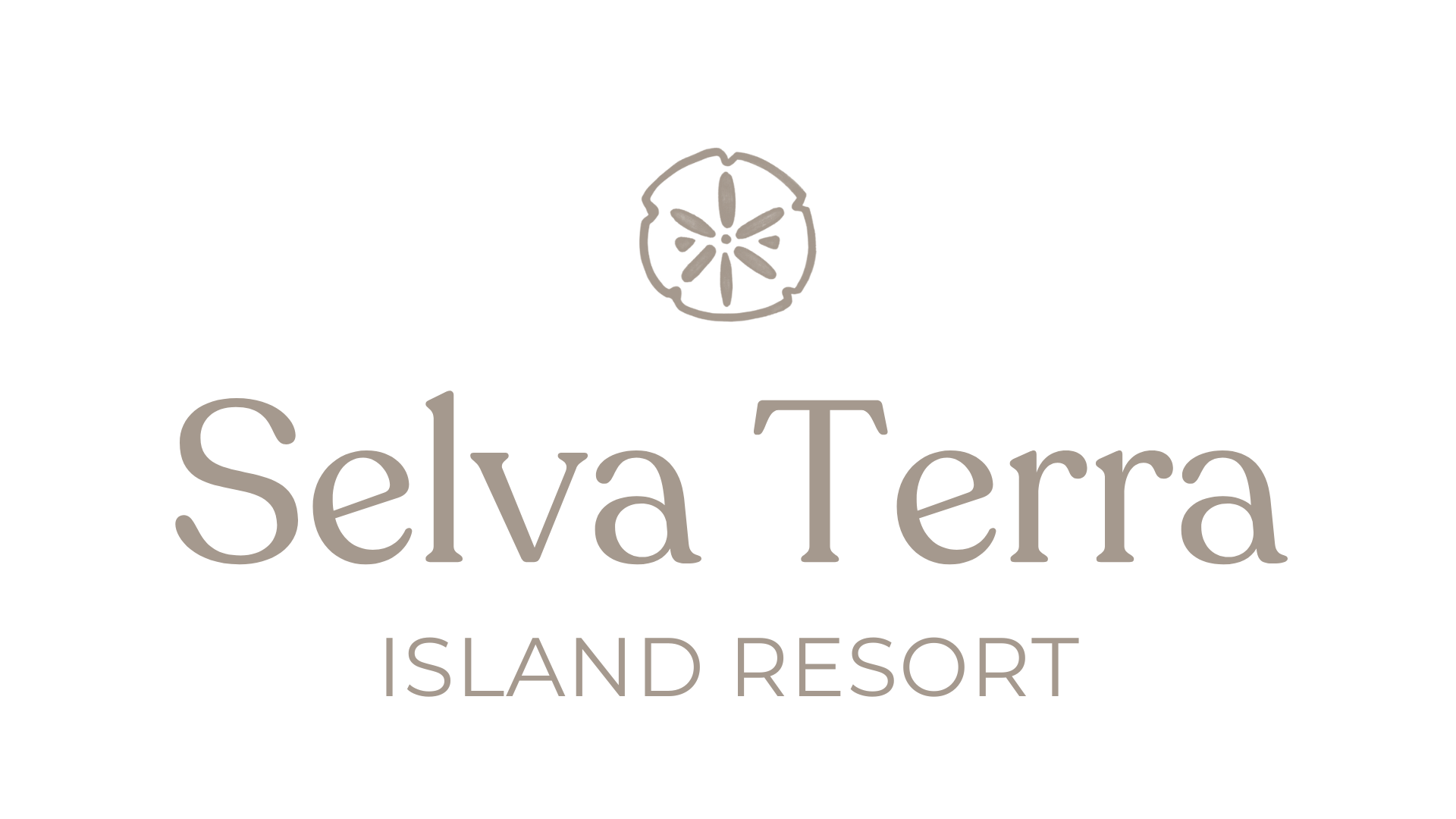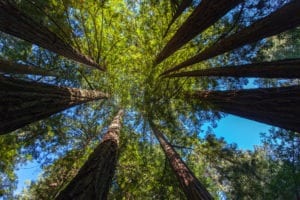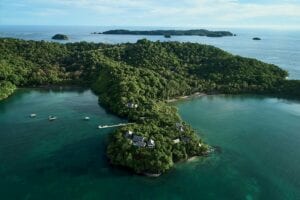Panama is a land of lush greenery and vibrant ecosystems. Its tropical climate nurtures a diverse array of tree species, from towering giants to smaller, delicate species, each tree has unique characteristics, contributing to the country’s rich biodiversity. Panama’s trees offer more than just shade and beauty. They play crucial roles in the ecosystem by providing habitat, stabilize soil, and sequester carbon.
Many of Panama’s trees have practical uses through providing timber, food, and medicine. Their seeds and flowers are often used in local cuisine and traditional remedies. Through exploring Panama’s trees, we gather insights into tropical biodiversity and it highlights the interconnectedness of nature. Join us as we delve into the fascinating world of Panama’s trees.
The rich biodiversity of Panama’s trees
Panama’s geographical position makes it a bridge between North and South America. This unique location supports an extraordinary variety of tree species. Each region, from coastal areas to mountains, boasts distinct flora.
The country’s tropical climate fosters diverse ecosystems. Rainforests, wetlands, and savannas are home to numerous tree species. This diversity is a cornerstone of Panama’s ecological richness.
Which trees are iconic to Panama?
Some of the most iconic native trees in Panama include:
- Panama Tree (Sterculia apetala)
- Balsa Tree (Ochroma pyramidale)
- Cashew Tree (Anacardium occidentale)
- Ceiba Tree (Ceiba pentandra)
- Guayacan Tree (Tabebuia guayacan)
- Mahogany Tree (Swietenia macrophylla)
These trees not only enhance the landscape with their beauty but also offer practical uses. From providing timber and non-timber forest products to serving in traditional medicine, these trees play vital roles. Understanding their characteristics and benefits highlights their importance.
Panama Tree (Sterculia apetala)
The Panama tree, known locally as “Anacaguito,” is a prominent species. It is renowned for its majestic height, reaching up to 40 meters. This tree thrives in wet lowland forests, adding to their lush appearance.
Its large canopy provides ample shade and shelter for wildlife. The seeds are edible and form a staple in local diets. Moreover, the tree’s flowers, though small and unobtrusive, still play a significant ecological role.
Local communities value the Panama tree for its medicinal properties. Its bark has anti-inflammatory effects, used in traditional remedies. This demonstrates the tree’s importance beyond its ecological function.
Key characteristics of the Panama tree include:
- Height: Up to 40 meters
- Edible Seeds: A food source in local cuisine
- Flowers: Small and not prominently visible
- Medicinal Use: Anti-inflammatory properties
These features make the Panama tree an invaluable component of its ecosystem. Recognizing and preserving such species ensures the continuation of their benefits to biodiversity and culture.
Balsa Tree (Ochroma pyramidale)
The Balsa tree is notable for its rapid growth and lightweight wood. Often found in the forests of Panama, it reaches heights of 30 meters swiftly. Its adaptability allows it to colonize open areas effectively. Balsa wood is highly prized for its lightweight and buoyant nature. It is commonly used in crafting models and structures. This makes it economically important for various industries. The tree’s seeds, easily carried by wind, promote widespread dispersal. This adaptation aids in the Balsa tree’s rapid spread and regeneration in diverse habitats.
Characteristics of the Balsa tree:
- Height: Up to 30 meters quickly
- Lightweight Wood: Ideal for model building
- Seed Dispersal: Facilitated by wind
- Economic Importance: Used in crafts and industry
The Balsa tree’s role extends beyond economic value; it’s crucial in regenerating forest gaps. Its ability to thrive in diverse conditions underscores its ecological contribution.
Cashew Tree (Anacardium occidentale)
The Cashew tree is known globally for its nuts and unique fruit. In Panama, it serves as both an economic and ecological asset. The tree is typically of medium size, reaching around 14 meters. The tree’s fruit, known as the cashew apple, is vibrant and edible. It adds culinary diversity and nutrition to local diets. The nut itself is a cherished product with significant export value. Furthermore, the tree exhibits medicinal properties. Its sap is used traditionally for treating microbial infections. This reveals another layer of the tree’s multifaceted value.
Key aspects of the Cashew tree include:
- Height: Up to 14 meters
- Fruits and Nuts: Valued for taste and economic contribution
- Medicinal Sap: Known for antimicrobial qualities
- Ecological Role: Supports local economy and wildlife
The Cashew tree exemplifies the synergy between nature’s bounty and human use. Its cultivation and conservation are vital for maintaining its benefits.
Ceiba Tree (Ceiba pentandra)
The Ceiba tree, with its towering stature, is a symbol of grandeur in Panama. It can reach impressive heights of 70 meters, supported by its massive trunk and buttress roots. Such features make it a keystone species in rainforests. Ceiba trees are known for their striking, large flowers. These blooms attract diverse pollinators, contributing to the ecological tapestry of the region. The tree plays a role in traditional crafts through its wood use. Beyond its physical attributes, the Ceiba has cultural significance. Many local legends and beliefs are tied to its majestic presence.
Features of the Ceiba tree include:
- Height: Can exceed 70 meters
- Flowers: Large, appealing to pollinators
- Wood Use: Traditional crafts and canoes
- Cultural Symbolism: Embedded in local folklore
The Ceiba tree’s towering presence commands respect and care. It highlights the blend of ecological, cultural, and practical values these trees offer.
Guayacan Tree (Tabebuia guayacan)
The Guayacan tree, celebrated for its resilience, is a testament to nature’s strength. Known for its hard wood, it’s often used in construction. The tree reaches up to 35 meters and brightens landscapes with its yellow flowers. These vibrant flowers are not just visually striking, but they are also crucial for attracting pollinators. The tree’s durability extends beyond its wood; it shows remarkable resistance to drought. Traditional medicine values the Guayacan for its anti-inflammatory and pain-relieving properties. This enhances its reputation as a multifunctional tree.
Important points about the Guayacan tree include:
- Height: Around 35 meters
- Flowers: Bright yellow, attract pollinators
- Wood: Utilized in construction for durability
- Medicinal Uses: Anti-inflammatory effects
The Guayacan tree’s combination of beauty and utility showcases the value of Panama’s arboreal resources. Its conservation aids in sustaining its diverse applications.
Mahogany Tree (Swietenia macrophylla)
Mahogany is synonymous with elegance and strength. It stands as one of Panama’s most esteemed trees. Growing up to 60 meters, it features a wide canopy and premium timber. The tree’s wood, known for its quality, is used in fine furniture and cabinetry. Its economic value is significant and has made it a mainstay in global trade. Apart from its economic stature, Mahogany seeds have unique winged structures. This aids in their dispersion through wind, enhancing regeneration.
Details about the Mahogany tree include:
- Height: Reaches up to 60 meters
- Timber: Sought after for high-quality furniture
- Seed Dispersal: Winged for wind distribution
- Economic Impact: Influences local and global markets
The Mahogany tree exemplifies the blend of natural beauty and economic importance. Its protection ensures the continuation of its dual legacy in ecology and commerce.
Other Notable Trees in Panama’s Forests
Panama’s forests are teeming with an array of remarkable trees that deserve recognition. Each tree, with its unique attributes, contributes to the overall ecological mosaic. These trees support diverse wildlife and help maintain ecological balance within their environments. Many of these trees are important not just for their ecological roles, but also for their cultural and economic significance. For example, native communities often use them in traditional practices and crafts. Besides, they provide crucial services like soil stabilization and carbon sequestration.
Some notable trees you might encounter in Panama’s lush forests include:
- Almond Tree (Terminalia catappa): Known for its distinctive layered branches.
- Cocobolo Tree (Dalbergia retusa): Prized for its dense, vibrant-hued wood.
- Mangrove Tree (Rhizophora mangle): Essential for coastal protection and habitat.
- Espavé Tree (Anacardium excelsum): Recognized by its large, umbrella-like canopy.
These trees add to the rich tapestry of Panama’s natural landscapes. Their preservation not only benefits local ecosystems but also aids global environmental health. Acknowledging their importance is a step toward ensuring their survival for future generations.
Medicinal and Cultural Importance of Panama’s Trees
Panama’s trees hold deep medicinal significance. Many species contribute to traditional healing practices. Local communities have used plant-based remedies for generations, demonstrating their profound knowledge of these natural resources. Several trees possess notable medicinal properties. For instance, the Panama tree boasts anti-inflammatory uses. Similarly, the sap of the cashew tree is valued for its antimicrobial effects. These natural remedies highlight the diverse benefits that Panama’s rich flora provides.
Key medicinal and cultural roles of Panama’s trees include:
- Panama Tree: Used in anti-inflammatory treatments.
- Cashew Tree: Sap applied for antimicrobial purposes.
- Ceiba Tree: Integral to rituals and spiritual beliefs.
- Guayacan Tree: Featured prominently in traditional crafts.
These trees are not only vital for their ecological contributions but also for preserving cultural identity. Understanding their roles offers insight into how local communities interact with and benefit from their natural surroundings.
